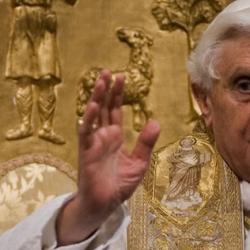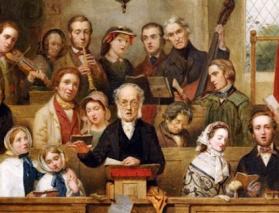Bruce Ellis Benson argues in The Improvisation of Musical Dialogue that the distinction of “composing” and “performing” doesn’t “describe very well what musicians actually do.” In place of this “binary” scheme, he offers an “an improvisational model of music, one that depicts composers, performers, and listeners as partners in dialogue. From this perspective, music is a conversation in which no one partner has exclusive control” (x).
“Classical” music provides the apparent counter-example, so Benson spends a lot of time showing that his improvisational model fits what happens in classical music. Along the way, he cites Roman Ingarden’s analysis in Ontology of the Work of Art, where Ingarden characterizes a musical score as a sketch. Benson writes,
“what we hear in performance is always much more than can be indicated in the score, as Ingarden is also well aware. The ‘imperfection’ of musical notation ‘makes the instructions for performing the work given in this notation incomplete,’ so that ‘the work is defined only in a schematic way by the specification of only some determinations.’ Thus, the score, for Ingarden, can best be described as a kind of sketch of what one hears in performance: it prescribes the basic contours of the piece and allows the performer to fill in the rest. Naturally, scores can be more or less defined, as the composer wishes. In some cases, composers provide strict guidelines for the performance of a piece: for example, an exact number of performers, precise bowing directions, a particular type of mute for brass instruments, or even a different pitch to be used for tuning. Perhaps virtually any aspect of a work could be, at least theoretically, specified; but, in many cases, such specifications would be only vague at best” (80-1).
Scores are filled with Unbestimmtheitsstellen, “places of indeterminacy,” and this means that performers not only have room for improvisation but that such improvisation is required (82). Taking a page from Wittgenstein (cf. his discussion of “broom”), we might say these gaps are not failures or imperfections of the work but a condition for the possibility of performance. Ingarden makes similar claims about the indeterminacies of fiction.
How do performers know which parts of a score must be followed? Performance traditions vary. Scores are edited and re-edited. Even a return to original instrumentation is a choice. Choice is simply unavoidable, but Benson argues that it is a choice that must arise from gratitude for the past – the past of the composer’s score and the past performance history:
“the past is not merely a collection of performances that are themselves gifts to us (even if we decide that, as gifts, they likewise distorted what they were supposed to be passing along). Those performances – and the performance tradition – were only possible because of performers. Thus, our lack of gratitude is a lack of gratitude to specific human beings who, at least in many cases, were probably trying their best. And so there is a deep ethical component to this lack of appreciation. Strangely enough, though early music performers have often justified their performances precisely on the basis of being ‘true’ to the composer and so considered themselves to be ‘ethically responsible,’ that ingratitude to the intervening past in effect has made them ethically irresponsible” (122).











